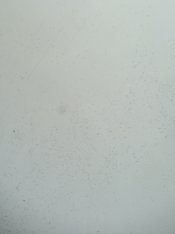Bosaiya
Member
High percentage (+90%) rubbing alcohol from the drugstore is cheap, effective, and cleans itself up.
High percentage (+90%) rubbing alcohol from the drugstore is cheap, effective, and cleans itself up.

My recommendation for home use: the Arkansas sky observatory recipe and directions.

Nice! It still looks a lot cleaner than any of my lenses. I mostly use the t-shirt method.
Just for interest's sake, I looked it up and it can be found here Dead Link Removed
It specifies a particular US product (Windex "blue") which I've never seen in the UK, but of course might be available elsewhere, plus quantities are given in US measures so would need conversion.
I'm in the huff-on-it-and-rub-it-with-my-sleeve school, of course, but then I'm a bit of a Neanderthal about these things
Does anyone have recommendations on what chemicals can be used to remove the coatings on lenses? I don't want to go the mechanical abrasion route because I know it won't be very even.
Coatings are stripped mechanically using pitch lap and polish. Optical coatings cannot be removed chemically (unless you select something that would destroy the glass substrate).
Does this include really old coatings from decades ago?
Does this include really old coatings from decades ago?

Why use "aggressive chemicals " there are so many excellent lens cleaning fluids for photographic lenses on the market that are perfectly safe and leave no residue I recommend this one it's magic. http://www.bhphotovideo.com/c/produ...Solutions_EC_Eclipse_Optic_Lens_Cleaning.html
The O.P. stated "modern lens coatings" and made no reference to the type of optics you describe.Because when you're rehabilitating a 50+ year old lens that's been indifferently treated and/or stored for much of that time, conventional chemicals are often rendered ineffective by the accumulated filth.
Because when you're rehabilitating a 50+ year old lens that's been indifferently treated and/or stored for much of that time, conventional chemicals are often rendered ineffective by the accumulated filth.


Nodda, is it possible those spots are created by dust specs that were left on that lens for a very long time in a humid environment? I'm not suggesting mold or mildew damage but rather the erosion effects you mentioned. Things like dust and lint can absorb and hold moisture in one spot for a much longer time than on clean surfaces.
Dust and lint could hold moisture to the surface, but I would think the spots would be few and far between and not so uniformly distributed or numerous. You'd see maybe a handful of spots. Keep in mind these are several hundred spots per square millimeter. Another thing to consider, the spots are so small they are similar in size to a cell (the living type) and round. Dust particulates look very different and would leave jagged pits and micro scratches from the resultant cleaning esp in this quantity. But maybe I suppose. I've seen stranger things. However my gut points to something more like condensation or misting.
 Extremely careful cleaning can successfully remove such debris without scratching with tremendous care/patience and lots of time. Unfortunately, my hands are too unsteady these days to risk damaging valuable optics if they're truly filthy.
Extremely careful cleaning can successfully remove such debris without scratching with tremendous care/patience and lots of time. Unfortunately, my hands are too unsteady these days to risk damaging valuable optics if they're truly filthy.| Photrio.com contains affiliate links to products. We may receive a commission for purchases made through these links. To read our full affiliate disclosure statement please click Here. |
PHOTRIO PARTNERS EQUALLY FUNDING OUR COMMUNITY:  |